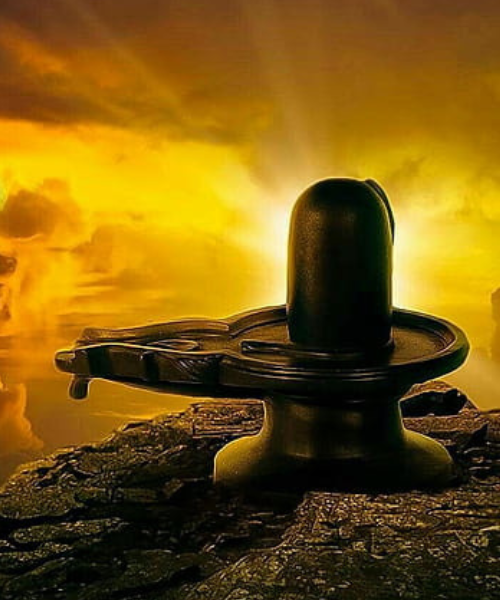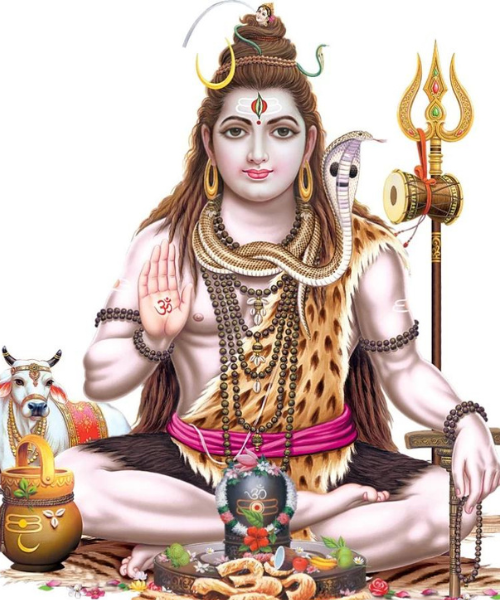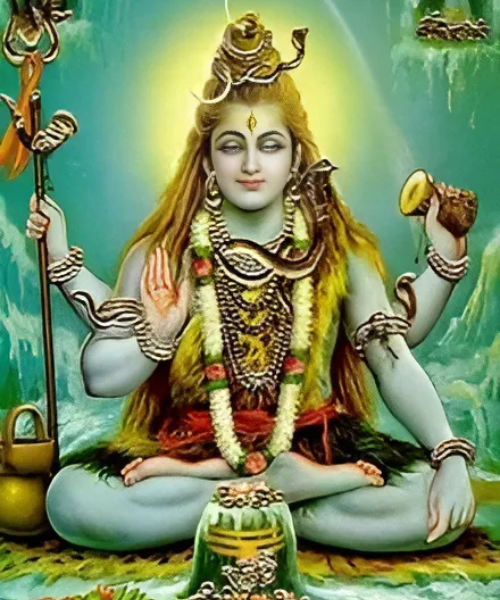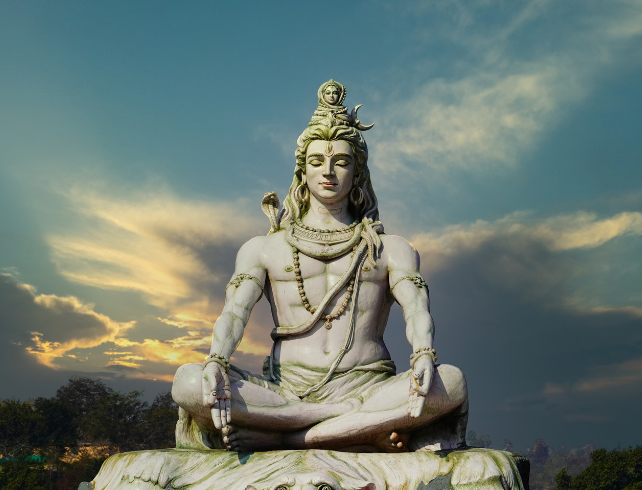The Linga is the symbol of the Shiva. This is a principle of immutability, stability, strength and endurance, which is reflected in the cosmic masculine principle, the higher side of masculine values and virtues.
To merge one’s mind into that Yoni of the heart is to move through all creation to the Absolute beyond, to be reborn into the Supreme.
The Shakti Yoni is the complementary horizontal force to the Shiva Linga’s vertical force. The Yoni is the valley to the mountain, the meadows to the forests, the water to the fire, the woman to the man.
Tantric Linga worship is connected to Vedic pillar worship, which has parallels throughout the ancient world and in indigenous cultures in general, who can still perceive the spiritual powers behind the formations of nature. The Shiva Linga is often a pillar of light. In special Vedic fire rituals, the fire can be made to rise in the shape of a pillar which cn take the shape of a man. In fact, the term Dharma originally refers to what upholds things and can be symbolized by a pillar. The Shiva Linga is the universal pillar of Dharma or Dharma Linga. The pillar is also an inner symbol indicating the erect spine and concentrated mind.
These texts describe the esoteric teaching of Tantra, a belief system which originated in India, practiced by Aryans, later known as Sanatans and after that they were known as Sindhis or Hindus and also Buddhists. Tantra has become a synonym in the West for unbridled sexuality; however sexuality per se is only one facet of this elaborate spiritual practice, as a representation of the union of the soul with the Goddess. Rather, this attitude reflects the spiritual vacuum of mainstream Western religions, when it comes to sacred sexuality. A deep study of Tantra can take a lifetime and is not for the undisciplined or the thrill-seeker. You need a lot of patience, sacrifice, time, concentration and meditation. This eventually leads to Kundidiani awakening.
Tantra does not advocate an epicurean or libertine philosophy. Quite the contrary, the practices which involves behaviour which is regarded by conventional Hinduism as ‘sinful’ (such as eating meat, drinking alcohol and having sexual union), normally requiring expatiator behavior are supposed to only be engaged in by spiritually advanced practitioners in the appropriate ritual context. A set of alternative practices are recommended by Tantra for general use (substituting sweets for meat & praying and chanting for sexual union). It should also be noted that the Hindu concept which we describe here as sin, is somewhat different than the Christian version.
Taken with these caveats, the assertion of Tanta that sexual energy can be harnessed to achieve union with the divine is fairly unique among world religions. The encounter with this school of thought by western occultists had a profound impact on the development of modern Neo-paganism (modern religious movements).
In terms of our human nature, there are several lingas or holistic marks. The force of Prana is the Linga or pillar of force upholding the physical body, according to the currents that emanate from it. This is called the Prana Linga. In Prana Yoga, there are three main channels. Ida relates to the right side of the brain, and pingala relates to the left side of the brain, with ida terminating at the left nostril, & pingala terminating at the right nostril. In yogic practices, alternate nostril breathing balances the prana that flows through the body. There are five Pranas or vital currents in the Hindu system. Prana is responsible for the beating of the heart; Apana is responsible for the elimination of waste products from the body; Udana is responsible for producing sounds through the vocal apparatus, as in speaking, singing, laughing, or crying. Samana is responsible for digestion and cell metabolism (repair and manufacture of new cells), and Vyana is responsible for the expansion and contraction processes of the circulatory system and the muscular system.
Our deeper intelligence or Buddhi (the thinking power of our brain) is the power of insight to discern higher realities. The Buddhi connected to the Atman (soul) or higher Self is the ultimate linga or determinative aspect of our nature that remains steady and elevated (transcendent) throughout our life experiences, known as the Atma Linga. The Shakti Yoni is the complementary horizontal force to the Shiva linga’s vertical force. The yoni is to the mountain what the meadows are to the forests, the water to the land, and the woman to the man. Geometrically, the yoni is represented as the downward-pointing triangle, symbolizing water, creation, the flow of grace, and nectar. The yoni is present as the female sexual organ in both humans & animals, symbolizing the power of the womb. The yoni of the Goddess is worshipped at the great temple of Kamakhya Devi in Assam, Northeast India, where a special spring of water flows from the sacred hill by the great Brahmaputra River.
Worship of the Yoni is part of the greater worship of sacred circles, ones which, along with standing stones, we find everywhere in the ancient world. Stonehenge in England, and other similar sacred sites that have standing stones formed into great circles, show the union of the linga and the yoni or the cosmic male and female principles. As in the beginning parts of this book it mentioned masculine as Purusha and feminine as Parkariti (which also means nature). In this section masculine is described as Linga and feminine as Yoni. These two powers are activated in Tantra Yoga to awaken Kundi Lioni. Kundi Lioni Yoga is also practiced through Tantra Yoga. They reflect the universal religion of the two powers, that the Hindus call Shiva & Shakti. The real inner yoni is the cave or small space within the heart (dahara akasha) in which the entire universe dwells & which holds the deepest inner fire within us and the very wellspring of life. To merge one’s mind into that yoni of the heart is to move through all to the Absolute beyond, to be reborn into the Supreme.
Furthermore, when the holy fire is lit for offerings to God, the ‘Fire God’ is worshipped, & the fireplace, which is called Vedi or Bedi or Havana Kunda, symbolizes the union of Shiva & Shakti. The Vedi represents the union of Linga (phallic symbol of Shiva) and Yoni (symbol of Shakti), symbolizing the cosmic creation. The Linga & Yoni are positioned towards the fire, representing the balance of masculine and feminine energies. Offerings are made into the fire while chanting mantras to honor and invoke the presence of Shiva & Shakti.
The Linga and the yoni always go together, first of all on the level of symbols. The Linga with the yoni below it shows the union of male & female energies, not just in sexuality, but also as electro-magnetic forces, with currents of circular Shakti entwining the still upright Linga, like an infinite energy transformer. Each serves to support and sustain the other. Energy in its movement creates a yoni, just as a point in its movement creates a circle. We can see this in the circular movement of the stars, planets, and nebulae, as well as in many other diverse phenomena in the world of nature. The central luminary is the Linga & its field of revolution is the yoni.





